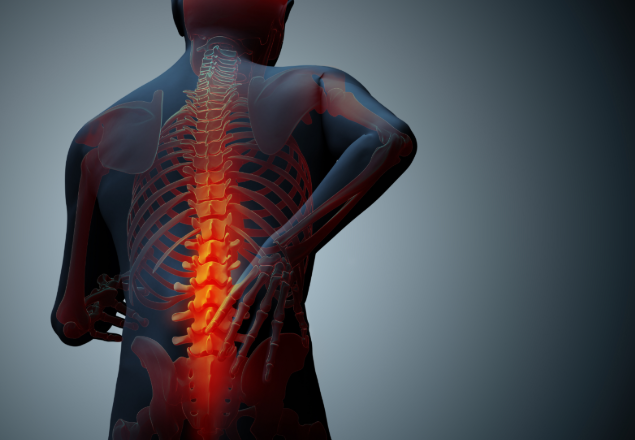A vertebral compression fracture is a fracture that occurs in one or more vertebra (the bones that make up the spine). Vertebral compression fractures may result from injury caused by the trauma of the spine but occur most often in post-menopausal women with osteoporosis. Osteoporosis is a condition where bone tissue becomes fragile and porous. This is caused by the loss of calcium.
Many women over age fifty can experience breakage of the hip, wrist, or vertebrae due to osteoporosis. Another cause of vertebral compression fracture is a tumor; usually, these tumors are due to multiple myeloma. Multiple compression fractures can and often do, lead to a condition called kyphosis, which is a hump-like curvature of the spine.
How do you know if you have a vertebral compression fracture?
Vertebral compression fractures may occur suddenly and without warning. Symptoms of vertebral compression fracture are moderate to severe pain felt in the back in the mid to lower spinal area, in the sides or as an internal pain in the front of the spine. The pain is described as knife-like, stabbing or sharp pain and can last from several weeks to months. Compression fractures that are caused by osteoporosis may occur without the patient realizing it and will only be discovered when X-rays are performed for other reasons.
If a person with osteoporosis suffers vertebral compression fractures without their knowledge, they may, over time, develop certain symptoms that are indicative of the fractures. These symptoms include back pain that begins slowly and worsens over time, often increasing while walking but decreasing while at rest. Altered posture, a stooped appearance, or kyphosis (humped back or curvature of the spine), also referred to as dowager’s hump.
How is a VCF diagnosed?
Diagnosis of vertebral compression fractures may include some or all of the following; a spinal X-ray, a bone density test, a CT (computed tomography) scan or MRI (magnetic resonance imaging). A noticeable hump (kyphosis) is usually indicative of vertebral compression fractures have occurred.
What treatments are available for a vertebral compression fracture?
Most compression fractures occur in older women who have osteoporosis. Often bed rest, pain medications and calcium supplements are advised. This allows time for the injury to heal, helps the patient deal with the pain and discomfort, and provides the body with the calcium needed to heal and strengthen the bones. The calcium supplements will also help to prevent future fractures by strengthening the bone. Although this type of treatment can help heal a fractured vertebra and prevent additional fractures, it will not reverse the damage to the vertebra caused by the fracture that has already occurred.
Can physical therapy help vertebral compression fractures?
Vertebral compression fractures caused by tumors often stem from breast cancer, lymphoma, and lung cancer as the tumors spread into the bone of the spine. These types of fractures are more complicated to treat and the outcome largely depends on the outcome of the treatment of cancer. Some patients can be treated with a back brace to support the spine and help prevent further damage or fractures from occurring. Physical therapy is another option that may be utilized to try to help strengthen the muscles so they can provide natural support to the spine.
Read more: Try These Foods to Heal Your Arthritis Naturally
Is surgery needed for a vertebral compression fracture?
Sometimes surgical procedures are performed to fuse the vertebra to help prevent further fracturing, however, complications may arise from this type of treatment. Some complications that may occur are a failure of the bones to actually fuse following the surgical procedure or a spinal cord or nerve root compression. This results in increased pain and pain in other locations. Best Orthopedic doctor NYC offers treatment for
As with any surgical procedure, there are risks, and due to the advanced age of most vertebral compression fracture patients, the risk of complications should be weighed against possible benefits. Speak with your physician if you think you are suffering from a vertebral compression fracture and let them determine the best methods of treatment for you.
Read more: Do You Know About The Diet That Helps Rheumatoid Arthritis?
